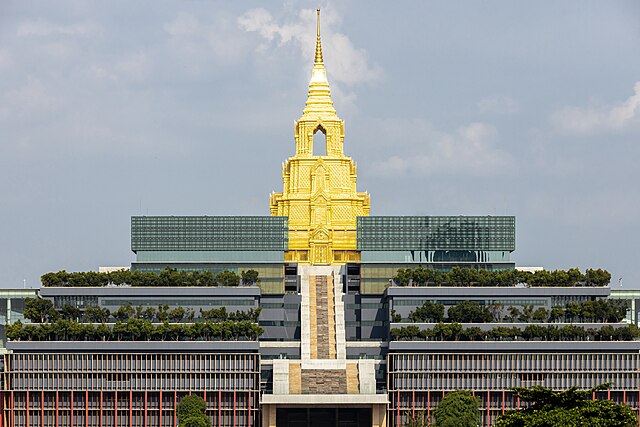The Politics of Thailand are conducted within the framework of a constitutional monarchy, whereby the prime minister is the head of government and a hereditary monarch is head of state. The judiciary is independent of the executive and the legislative branches.
Sappaya-Sapasathan, meeting place of Thailand's legislature, the National Assembly.
United Front for Democracy Against Dictatorship, Red Shirts, protest in 2010
The Constitution of the Kingdom of Thailand provides the basis for the rule of law in Thailand. Since the abolition of the absolute monarchy in 1932, Thailand has had 20 charters or constitutions, an average of one roughly every four years. Many changes followed military coups, reflecting the high degree of political instability in the country. After each successful coup, military regimes abrogated the existing constitution, generally without public consultation.
Preamble of the Constitution
The original copy of the 1932 constitution of Siam, the first constitution of Thailand, displayed at the Thai Parliament Museum, Bangkok. Each constitution was made in three copies handwritten on traditional folding books, kept at the Parliament Secretariat, the Cabinet Secretariat, and the King's Secretariat, respectively.
The initial pages of the 1952 constitution of Thailand, to which King Bhumibol Adulyadej affixed his signature and his regnal seal, accompanied by the three seals of the realm on the above.
King Prajadhipok (Rama VII) signs The "Permanent" Constitution of the Kingdom of Siam on 10 December 1932






